In today's industrial landscape, asset management is increasingly recognised as a crucial component of business success.
As global competition, efficiency demands, and technological advances intensify, organisations must adopt more comprehensive asset care strategies to ensure optimal performance and reliability of their physical assets. A key aspect of such strategies is lubrication, which, when integrated into a proactive, reliability-centred maintenance (RCM) approach, significantly enhances the effectiveness of a global asset care plan. This article explores how best practice lubrication, combined with RCM principles, supports and drives a holistic global asset care strategy.
Best Practice Lubrication: The Foundation of Asset Reliability
Lubrication is one of the most critical factors influencing the performance, reliability, and lifespan of industrial equipment. Proper lubrication minimises friction and wear, reduces energy consumption, prevents equipment overheating, and protects components from contaminants and corrosion. Despite its simplicity, improper lubrication - whether due to the wrong lubricant choice, insufficient lubrication, or contamination - is responsible for up to 50% of all mechanical failures in industrial equipment.
Best practice lubrication is defined by a systematic, precise, and proactive approach to ensuring that all machinery receives the correct type of lubrication, in the right quantity, and at the right intervals. When this is done consistently, it has a ripple effect across all maintenance operations, supporting not only machine reliability but also improving overall asset performance and longevity. The key principles of best practice lubrication include:
• Correct Lubricant Selection: Ensuring that the right lubricant, based on the specific operational environment, temperature range, and load conditions, is selected for each machine.
• Optimal Application Techniques: Using modern lubrication technologies such as automatic lubrication systems or condition-based lubrication to apply the right amount of lubricant at the right time.
• Contamination Control: Preventing dust, dirt, moisture (in particular from washdown), and other contaminants from entering lubricated components, which can degrade lubricant performance and accelerate equipment wear.
• Condition Monitoring: Continuously analysing the condition of the lubricant and machine components to detect early signs of contamination, degradation, or mechanical wear.
• Training and Documentation: Ensuring that personnel take certified training in lubrication practices and maintaining detailed records of lubrication schedules, lubricant types, and machine performance.
By embedding these principles into everyday operations, companies can greatly reduce machine downtime, increase asset reliability, and reduce the total cost of ownership.
Customers who have embarked on Activate's own Lubrication Excellence and Asset Care Programme have certainly seen incredible results across diverse areas of their business, as this testimonial illustrates:
"The Lubrication Excellence Programme has very much enhanced our production site, and given us a 10 to 1 return on investment. It has helped to reduce downtime, engage our people, change the culture from a time-based approach to a condition-based approach, increase efficiencies, reduce waste, and increase profit. It links directly into the Manufacturing Excellence Programme to form an essential part of our Asset Care strategy." Group Managing Director of a £4 billion turnover UK food manufacturing group.

The Proactive, Reliability-Centred Maintenance Approach
Reliability-centred maintenance (RCM) is a strategic process that focuses on understanding how assets fail and implementing maintenance strategies that prevent these failures from occurring. Rather than relying solely on reactive or time-based maintenance, RCM seeks to apply the most appropriate form of maintenance - whether predictive, preventive, or condition-based - based on a detailed analysis of an asset’s critical functions and failure modes. This methodology ensures that maintenance efforts are focused on maximising the reliability and performance of assets that are crucial to the organisation’s goals.
RCM involves several steps:
• Functional Analysis: Defining the primary functions of an asset and its performance standards.
• Failure Modes and Effects Analysis (FMEA): Identifying all possible failure modes of an asset, their causes, and the impact of failure on operations.
• Criticality Assessment: Evaluating the criticality of each failure mode based on the severity of its impact on operations, safety, and costs.
• Task Selection: Developing maintenance strategies for each failure mode, which can include corrective, preventive, or condition-based maintenance.
• Implementation and Monitoring: Deploying the chosen maintenance tasks and continuously monitoring the asset’s performance for any signs of deviation from expected standards.
When combined with best practice lubrication, RCM becomes even more powerful. Lubrication is a key factor in reducing failure modes related to friction, wear, and contamination, meaning that the impact of lubrication extends well beyond its immediate mechanical benefits. It directly supports the overall goal of RCM: maximising asset reliability.

Synergy Between Lubrication and Proactive Maintenance in a Global Asset Care Strategy
In a global asset care strategy, businesses are often faced with managing a diverse range of equipment, sometimes spread across multiple geographies, with varying operational requirements and environmental conditions. Lubrication best practices, integrated into a reliability-centred maintenance framework, create a unified approach to managing these assets in a way that improves performance while reducing costs.
1. Consistency Across Global Operations
A global asset care strategy requires standardisation of maintenance practices to ensure consistency and reliability across all sites. Best practice lubrication helps achieve this by establishing clear protocols for lubricant selection, application, and monitoring. This standardisation eliminates variability in lubrication practices, ensuring that equipment in different locations receives the same level of care and attention. For instance, automatic lubrication systems can be standardised across operations, reducing human error and ensuring consistent lubricant application.
2. Cost Reduction Through Extended Asset Life and Reduced Downtime
When lubrication is performed correctly, it significantly reduces mechanical wear, meaning that equipment operates for longer periods before requiring major repairs or replacements. By reducing friction and wear, lubricants decrease the stress on moving parts, resulting in longer service intervals and extended asset lifespans. This fits well with a global asset care strategy aimed at minimising capital expenditures on new equipment and reducing downtime.
Moreover, through the combination of best practice lubrication and predictive maintenance (a key pillar of RCM), unplanned breakdowns can be avoided. Lubrication analysis, including oil analysis programs, can detect early signs of mechanical degradation before they result in costly equipment failures. As such, proactive lubrication management is a major factor in reducing maintenance costs and improving operational uptime across all locations.
3. Enhancing Environmental and Sustainability Goals
Sustainability is becoming an increasingly important part of global asset care strategies. Lubrication management contributes to this goal by minimising waste and energy consumption. Efficient lubrication reduces friction and energy losses in equipment, leading to lower energy consumption and a reduction in greenhouse gas emissions. Additionally, condition-based lubrication reduces the amount of lubricant used by applying it only when necessary, cutting down on waste and disposal costs. Furthermore, better contamination control minimises oil leakage, which reduces the environmental impact of spills.
4. Digital Transformation and Asset Care Strategy
Modern lubrication practices are increasingly supported by digital tools and the Industrial Internet of Things (IIoT). In a global asset care strategy, IIoT sensors can monitor lubrication conditions in real-time, enabling predictive maintenance and more precise lubrication scheduling. For instance, vibration sensors and temperature monitors can detect when a machine is operating outside of normal parameters, indicating the need for lubrication or other maintenance interventions.
This data-driven approach allows for more effective decision-making on a global scale. By integrating digital monitoring tools with lubrication management and RCM, companies can establish a comprehensive system for tracking asset performance, predicting failures, and optimising maintenance schedules. The result is a proactive, condition-based maintenance system that ensures assets across the globe operate at peak performance.

Importance to the Food Manufacturing Industry
In the food manufacturing industry, best practice lubrication takes on added significance due to the unique regulatory and operational requirements. Food-grade lubricants, which are mandated for use in food processing equipment, must meet stringent safety standards to prevent contamination. This is essential because even minor lubricant contamination can result in serious food safety risks, product recalls, and damage to a brand’s reputation. Therefore, the correct selection and application of food-safe lubricants are critical not only for machinery performance but also for ensuring compliance with food safety regulations and standards, like BRCGS, FDA or NSF.
Furthermore, maintenance reliability in this industry has far-reaching implications; not only does it affect production efficiency, but it also directly impacts food quality and consumer safety. The sustainability aspect is equally crucial, as food manufacturers face increasing pressure to minimise their environmental footprint. By adopting proactive lubrication strategies, including condition-based monitoring, companies can reduce lubricant waste, energy consumption, and environmental contamination, all while maintaining the highest levels of food safety. This integration of lubrication management into the overall asset care strategy ensures that food manufacturers can achieve operational excellence while safeguarding public health and contributing to sustainability goals.
Conclusion
In a global asset care strategy, lubrication plays a crucial role in supporting the goals of reliability, efficiency, and sustainability. When integrated with a proactive, reliability-centred maintenance approach, best practice lubrication minimises equipment failures, extends asset lifespans, reduces operational costs, and enhances environmental sustainability. This synergy between lubrication and RCM enables companies to standardise maintenance practices across their global operations, optimise equipment performance, and ensure that their assets deliver maximum value throughout their lifecycle.
Incorporating best practice lubrication into a global asset care strategy is more than just a technical requirement; it is a strategic imperative that drives reliability, productivity, and long-term profitability in today’s competitive industrial environment. Through continuous improvement, training, and adoption of modern technologies, organisations can create a robust asset management framework that is both proactive and resilient, paving the way for sustained success in the global marketplace.









